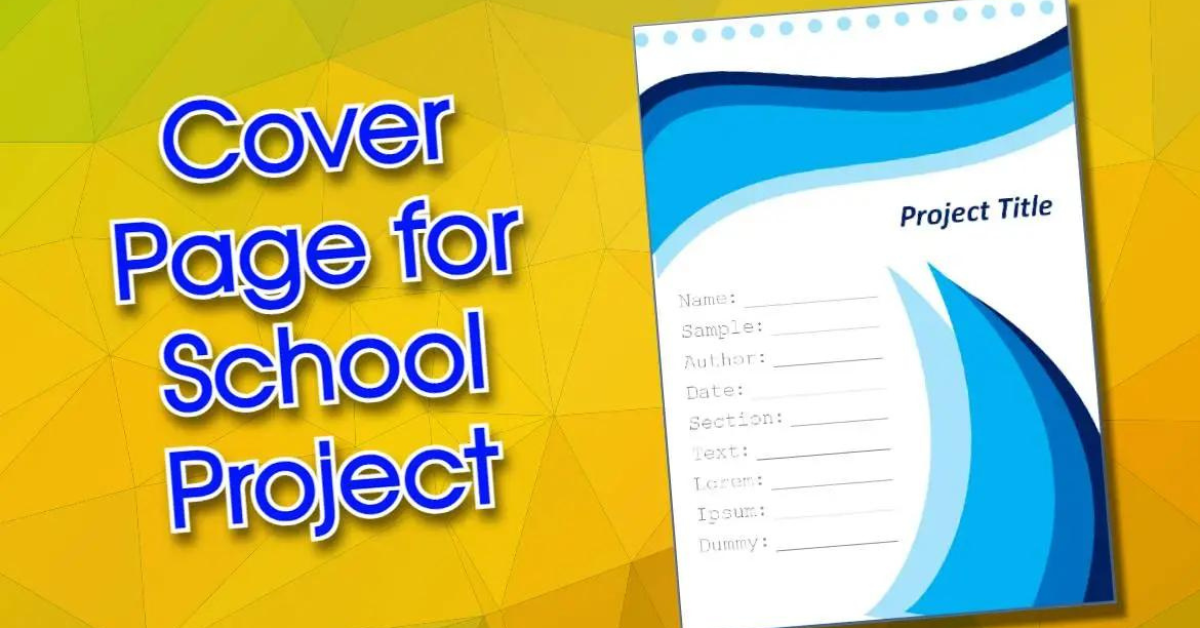Name Page Design for Project: Essential Tips and Elements
Creating a name page, or title page, for your project is an important step that sets the tone and provides essential information. Whether it’s a school assignment, a business proposal, or a research paper, a well-designed name page is the first thing people see.Name page design for project here’s how to make one that looks good and gives the right information.
Key Elements of a Name Page
1. Project Title
The title is the most important part of your name page. It should be clear and tell what your project is about. Make it stand out by using a larger font size and maybe making it bold. Centering the title on the page is a common practice to give it prominence.
2. Subtitle (if needed)
If your project has a subtitle, put it right under the main title. The subtitle gives more detail about the project. It should be smaller than the main title but still easy to see.
3. Author’s Name
Include your name or the names of all team members involved. Place this below the title or subtitle. Make sure it’s clear and easy to read.
4. Affiliation
If your project is associated with a school, university, company, or organization, include this information.Name page design for project this could be the name of your school, department, or company. Place it below the author’s name.
5. Date
Include the date of completion or submission. Position it below the affiliation or in a corner of the page.
6. Additional Information
Depending on your project, you might need to add other details like the project number, supervisor’s name, or course title. Place this information in the lower part of the page.
Design Tips for an Effective Name Page
1. Keep It Simple
Avoid clutter. The name page should be easy to read. Use white space to separate the different parts of the page.
2. Choose Readable Fonts
Use fonts that are easy to read and look professional. Common choices include Arial, Times New Roman, and Calibri. Don’t use more than two different fonts on the same page.
3. Use Font Size and Style Wisely
The title should be the largest text on the page. Use bold or italic styles to emphasize important parts, but don’t overdo it.
4. Align Text Consistently
Most people center the title and names on the page, but left alignment can also work well, especially for business documents. Make sure there’s enough space between the lines and sections to make the page look neat.
5. Add Simple Visual Elements
You can use lines, borders, or simple graphics to make the page look better, but keep them subtle so they don’t distract from the text.Name page design for project including logos or seals can also be a nice touch if they are relevant.
6. Choose an Appropriate Color Scheme
For formal documents, stick to black and white or muted colors. For more creative projects, use colors that match your theme but don’t go overboard.
Tools for Designing a Name Page
Here are some tools that can help you create a professional name page:
- Microsoft Word: Offers templates and easy-to-use formatting tools.
- Google Docs: Simple to use and great for collaboration, with basic design capabilities.
- Canva: User-friendly with many templates and design elements.
- Adobe InDesign: For advanced design needs with comprehensive layout options.
Conclusion
A well-designed name page is a crucial part of any project. It provides essential information and makes a strong first impression. Focus on key elements like the title, author’s name, affiliation, and date, and follow simple design principles to create a professional and appealing name page. Whether you use basic tools like Word or more advanced software like InDesign, taking the time to make a good name page will help set a positive tone for your entire project.







